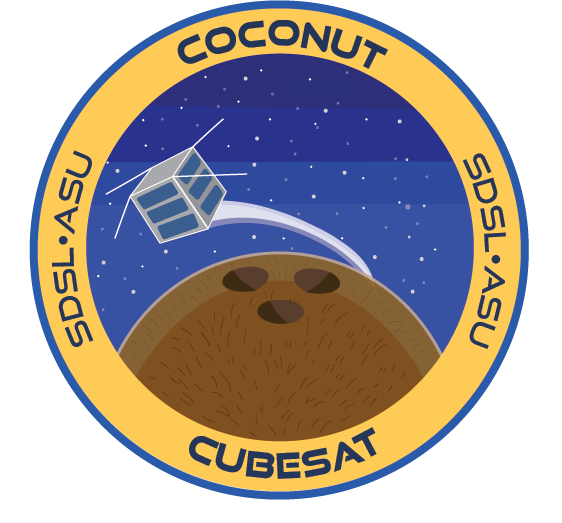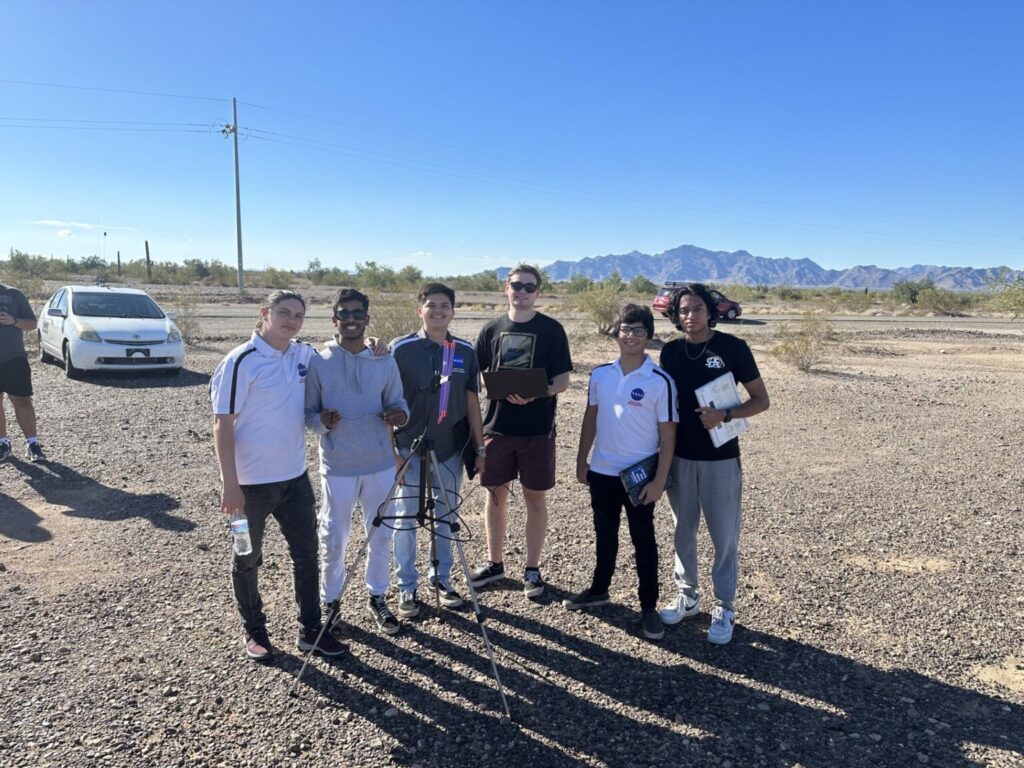What does COCONUT stand for?
Coconut is not an acronym, but instead just the name of the project, “Coconut” or “Coconut CubeSat”. This is a reference to a Monty Python scene where they talk about the coconuts traveling across continents. It’s a (loose) analogy to Coconut’s mission of moving data across the globe.
What is the purpose of this spacecraft and its mission?
The purpose of the Coconut CubeSat is to forward data from small, inexpensive ground stations all around the world back to ASU. The goal is to have other student groups participate in building and operating these ground stations which can be used for sensing data in remote locations or other scientific goals that these student groups might be interested in. While that is the primary mission of the satellite, another focus of the project is giving students hands-on engineering experience by building an actual satellite. Students can be involved with circuit design, software development, CAD design and more throughout the lifetime of the project.
What is NASA’s role in this mission?
NASA’s role in this mission is providing us with a launch opportunity as well as assisting us in the integration of our satellite onto a launch vehicle. In 2022, we submitted a proposal for NASA’s CubeSat Launch Initiative (CSLI) and were selected in early 2023 to be one of a few CubeSat projects across the United States that year to have its integration and launch funded by NASA. So not only are they providing us with funding and assistance, but we are also representing them and their CSLI program with our CubeSat project.
When is the launch?
Spring 2025

Contributor: Dylan Larson – Project Lead
Short bio: Degree, why you’re involved with the Interplanetary Lab, other hobbies, dream career goal.
I am a rising senior in Computer Systems Engineering and I am not only a long time member of the Sun Devil Satellite Lab (the team that works on Coconut) but I am also a contract engineer at the Interplanetary Lab where I work on the DORA CubeSat. As much as I like engineering and space stuff, I also like to get out of the house and play sports or do other things away from the computer. I hope to keep working on spacecraft after university. The dream would be to work on a project going to another planet like a rover or probe of some kind.
What is your role in the mission’s objectives?
My role in the Coconut project is as its team lead along with Athul Kodancha. I focus mainly on the software and electrical components of the project. I make sure tasks are distributed evenly and milestones are being completed on time. I also do work on the flight software, which runs the satellite operations on our on-board computer.
Reflecting on your experience and your role on the team, what was the most valuable skill, concept, or perspective you gained from your time on this project personally and as a future professional in the aerospace industry?
The most valuable skill I gained from this project (and DORA as well) is to be able to learn and figure out things that I didn’t know. During a lot of these university and even industry projects, you run into things you haven’t heard of or asked to do something you haven’t done before. It can be intimidating and difficult to know how to even begin on something you know nothing about, but I think working on projects like these CubeSats can really help you learn how to figure things out, find out who to ask for help on certain components or concepts, or even help you learn when you should ask for help. These things are just as important in the industry as they are in university projects like these.
–
Contributor: Athul Kodancha – project lead
Short bio: Degree, why you’re involved with the Interplanetary Lab, other hobbies, dream career goal.
I am currently a rising senior in Aerospace Engineering (Astronautics) and on contract with the Interplanetary Lab for the DORA cubesat. In addition, I have been in the Sun Devil Satellite Lab since freshman year. In my free time, I enjoy working out and playing basketball with my friends. My dream is to work on spacecraft which send people to other planets.
What is your role in the mission’s objectives?
In addition to being team lead, which involves handling all of the funding, launch integration, and scheduling, I also lead the Mechanical and Attitude Control subsystems for the CubeSat. I ensure that the subsystem teams hit their goals and are successful in their role as members of the cubesat project.
Reflecting on your experience and your role on the team, what was the most valuable skill, concept, or perspective you gained from your time on this project personally and as a future professional in the aerospace industry?
A valuable skill I learned while in my role was people managing. People management skills enabled me to lead and motivate the team effectively, ensuring that everyone works towards the common goals efficiently and harmoniously. I learned to convey expectations clearly, provide constructive feedback, and listen to the needs and concerns of the team.
